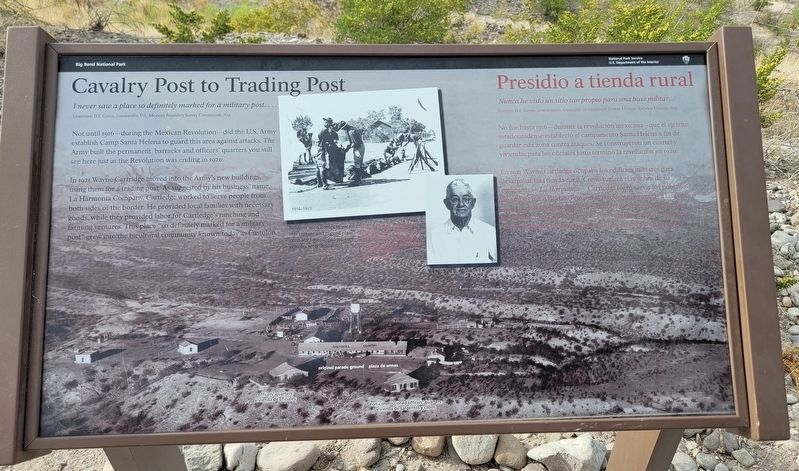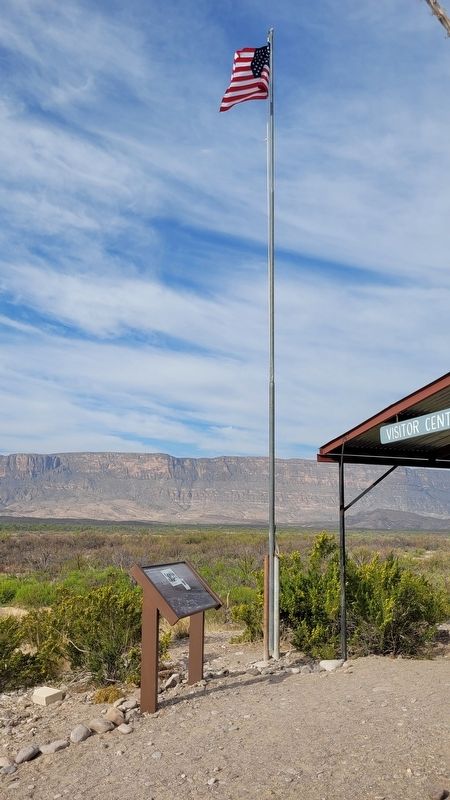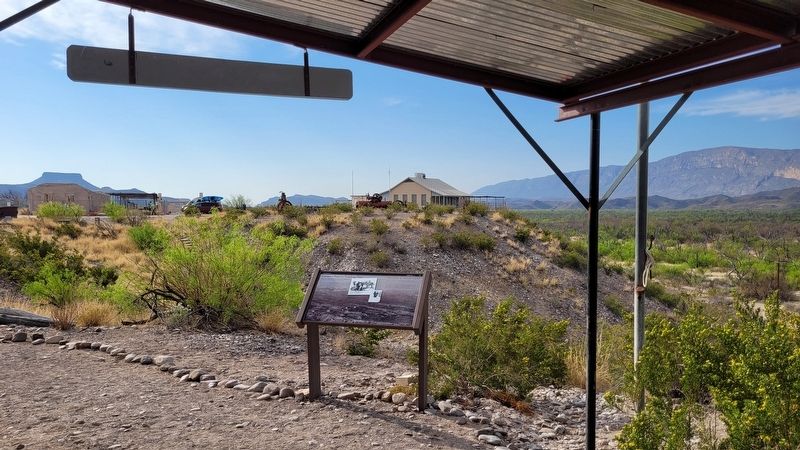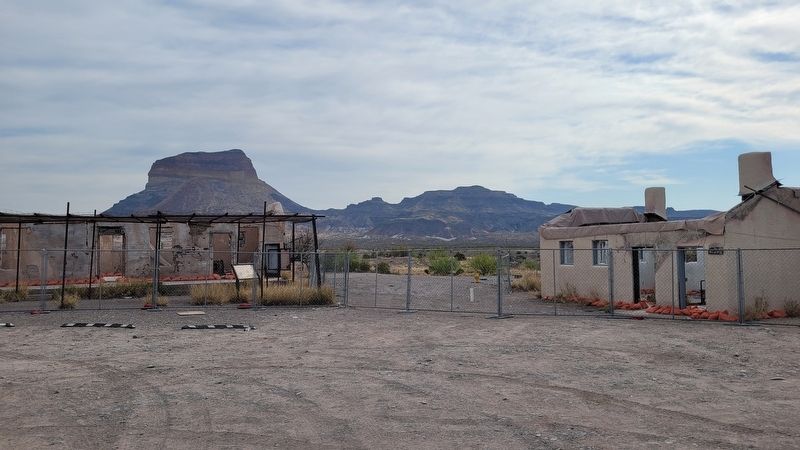Castolon in Big Bend National Park in Brewster County, Texas — The American South (West South Central)
Cavalry Post to Trading Post
Big Bend National Park
I never saw a place so definitely marked for a military post....
Lieutenant D. Green, commander, US-Mexican Boundary Survey Commission, 1851.
Not until 1916 - during the Mexican Revolution - did the U.S. Army establish Camp Santa Helena to guard this area against attacks. The Army built the permanent barracks and officers' quarters you still see here just as the Revolution was ending in 1920.
In 1921 Wayne Cartridge moved into the Army's new buildings, using them for a trading post. As suggested by his business name, La Harmonía Company, Cartledge worked to serve people from both sides of the border. He provided local families with necessary goods, while they provided labor for Cartledge's ranching and farming ventures. This place "so definitely marked for a military post" grew into the bicultural community known today as Castolon.
Captions
Soldiers used horses to patrol this remote and rugged place, even after motorized military vehicles were available.
Wayne Cartledge in the 1950s
Spanish:
Nunca he visto un sitio tan propio para una base militar...
Teniente D.F. Green, comandante, Comisión de establecer límites México-Estados Unidos, 1852
No fue hasta 1916 - durante la revolución mexicana - que el ejército estadounidense estableció el campamento Santa Helena a fin de guardar esta zona contra ataques. Se construyeron un cuartel y viviendas para los oficiales justo terminó la revolución en 1920.
En 1921 Wayne Cartledge ocupaba los edificios militares para desarrollar una tienda rural. Como sugiere el nombre de su compañía - La Harmonia - Cartledge logró servir los poblanos de ambos lados del río. Proveyó servicios y mercancias a las familias vecinas mientras que ellas trabajaron en sus empresas agrícolas y rancheras. Este sitio tan propio para una base militar llego a ser una comunidad bicultural conocida hoy en día como Castolon.
Subtítulos
Los soldados usaron caballos para patrullar este lugar remoto y accidentado, incluso después de que los vehículos militares motorizados estuvieran disponibles.
Erected by National Park Service - U.S. Department of the Interior.
Topics. This historical marker is listed in these topic lists: Forts and Castles • Parks & Recreational Areas • Wars, Non-US. A significant historical year for this entry is 1851.
Location. 29° 8.053′ N, 103° 30.896′ W. Marker is in Big Bend National Park, Texas, in Brewster County. It is in Castolon. Marker can be reached from the intersection of River Road West and Santa Elena Canyon Road. The marker is located on the grounds of the Castolon Ranger Station and Visitors Center. Touch for map. Marker is in this post office area: Big Bend National Park TX 79834, United States of America. Touch for directions.
Other nearby markers. At least 8 other markers are within 7 miles of this marker, measured as the crow flies. Garlick House (a few steps from this marker); Floodplain Panorama (a few steps from this marker); Magdalena's House (within shouting distance of this marker); Cotton Boom in Castolon (within shouting distance of this marker); La Harmonia Store (approx. 0.7 miles away); Grand Canyon Farms (approx. 4.2 miles away); Luna's Jacal (approx. 5.8 miles away); Into the Canyon! (approx. 6.2 miles away). Touch for a list and map of all markers in Big Bend National Park.
More about this marker. The marker is located on the grounds of the Big Bend National Park which requires an entrance fee to access.
Also see . . . Castolon Historic District. National Park Service
The buildings at Castolon are a remnant of Big Bend's pioneer and military history. Castolon experienced a rich cross-cultural mingling, as the Hispanic culture was a melding of Spanish and indigenous peoples of the region. Anglo-American settlers later entered the area, learning survival methods from the previous settlers and forming a bicultural community with the Mexican settlers. These rural families in Big Bend survived in a harsh landscape, compounded by the Mexican Revolution that began in 1910. During this time, bandits from Mexico took advantage of the chaos to raid small border communities, causing some families on both sides of the Rio Grande to abandon their homes.(Submitted on March 31, 2023, by James Hulse of Medina, Texas.)
Credits. This page was last revised on March 31, 2023. It was originally submitted on March 30, 2023, by James Hulse of Medina, Texas. This page has been viewed 70 times since then and 11 times this year. Photos: 1, 2, 3, 4. submitted on March 31, 2023, by James Hulse of Medina, Texas.



